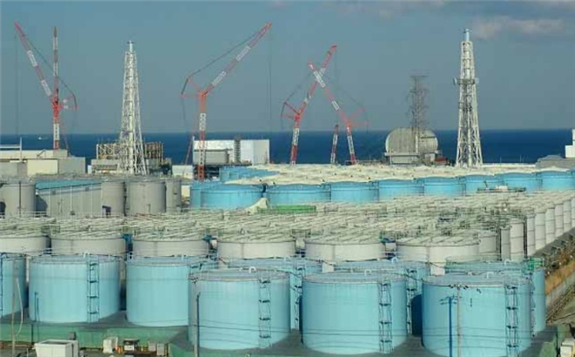A review of the management of treated water stored at the damaged Fukushima Daiichi nuclear power plant in Japan has been carried out by the International Atomic Energy Agency (IAEA). It says the two options under consideration for disposing of this water - discharge into the sea and via vapour release - are both technically feasible.
At the Fukushima Daiichi site, contaminated water is treated by the Advanced Liquid Processing System (ALPS), which removes most of the radioactive contamination, with the exception of tritium. This treated water is currently stored on site. As of 12 March, some 1.19 million cubic metres of treated water are stored within 979 tanks on the plant site. The total tank storage capacity will amount to approximately 1.37 million cubic metres by the end of 2020 and all the tanks are expected to be full around the summer of 2022.
The Japanese government had requested an IAEA review of the management of the stored water, including of the report by the Subcommittee on Handling ALPS Treated Water issued on 10 February.
In a review published yesterday, the IAEA said the two options for controlled disposal outlined by the advisory subcommittee - vapour release and discharges to the sea - were both technically feasible. These methods, it noted, are routinely used by operating nuclear power plants worldwide under specific regulatory authorisations based on safety and environmental impact assessments. The IAEA experts said the subcommittee's recommendations to the Japanese government were based on "a comprehensive and scientifically sound analysis addressing the necessary technical, non-technical and safety aspects".
The IAEA team said water management, including the treated water disposal, was "critical to the sustainability of the Fukushima Daiichi decommissioning activities". Reiterating advice from an IAEA decommissioning review mission to the plant in 2018, the experts said a decision on the disposition path for the stored treated water - after further treatment as needed - should be taken urgently, considering safety aspects and engaging all stakeholders. "Once the Government of Japan has decided on its preferred disposition option, the IAEA is ready to work with Japan to provide radiation safety assistance before, during and after the disposition," it said.
"The safe and effective implementation of the disposition of ALPS treated water is a unique and complex case," said team leader Christophe Xerri, director of the IAEA's Division of Nuclear Fuel Cycle and Waste Technology. "Solutions are available. They will require sustained attention, safety reviews, regulatory supervision, a comprehensive monitoring programme supported by a robust communication plan, and proper engagement with all stakeholders."
